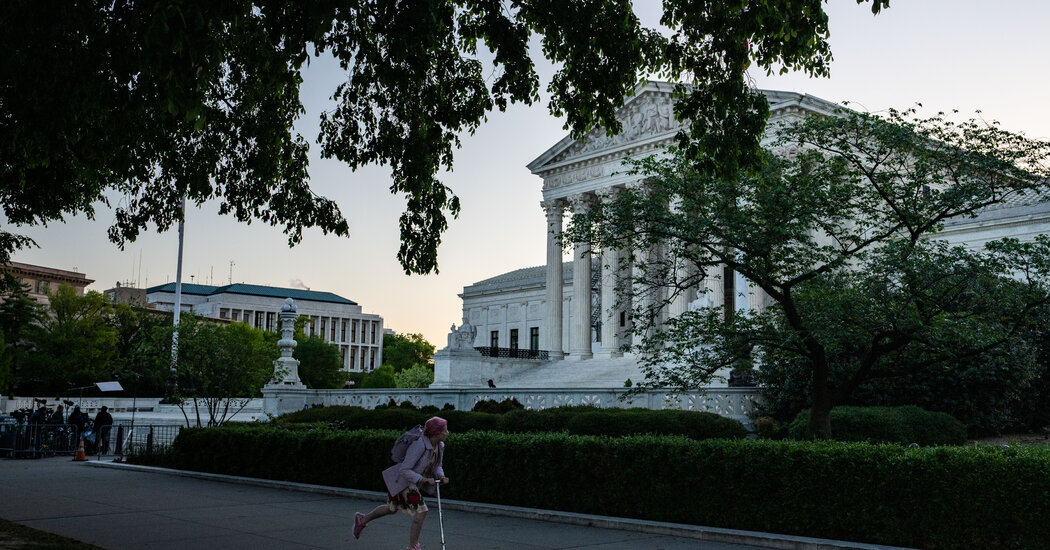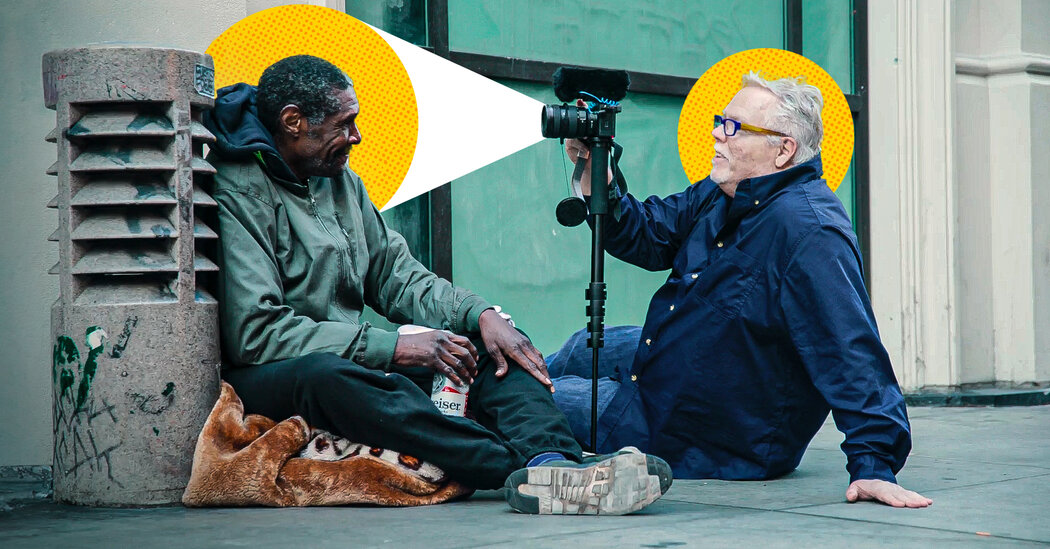NYT > Top Stories
2024-03-18 14:33:20
A majority of the Supreme Court seemed wary on Monday of a bid by two Republican-led states to limit the Biden administration’s interactions with social media companies, with several justices questioning the states’ legal theories and factual assertions.
Most of the justices appeared convinced that government officials should be able to try to persuade private companies, whether news organizations or tech platforms, not to publish information so long as the requests are not backed by coercive threats.
The dispute was the latest in an extraordinary series of cases this term requiring the justices to assess the meaning of free speech in the internet era.
Justices Brett M. Kavanaugh and Elena Kagan, both former White House lawyers, said interactions between administration officials and news outlets provided a valuable analogy. Efforts by officials to influence coverage are, they said, part of a valuable dialogue that is not prohibited by the First Amendment.
Members of the court also raised questions about whether the plaintiffs — Missouri and Louisiana, along with five individuals — had suffered the kind of injury that gave them standing to sue. They also suggested that a broad injunction prohibiting contacts between many officials and the platforms was not a proper remedy in any event.
“I don’t see a single item in your briefs that would satisfy our normal tests,” Justice Kagan told J. Benjamin Aguiñaga, Louisiana’s solicitor general.
Justice Sonia Sotomayor accused the states of distorting the record in the case. “I have such a problem with your brief,” she told Mr. Aguiñaga. “You omit information that changes the context of some of your claims. You attribute things to people who it didn’t happen to.”
Mr. Aguiñaga apologized “if any aspect of our brief was not as forthcoming as it should have been.”
The justices peppered Mr. Aguiñaga with hypothetical questions about national security, doxxing of public officials and contests that could endanger teenagers, all suggesting that there is a role for vigorous efforts by the government to combat harmful speech.
Justice Samuel A. Alito Jr., the member of the court who appeared most sympathetic to the states’ position, urged his colleagues to remain focused on the case before them.
“Whatever coercion means,” he said, “whatever happened here is sufficient.”
The case arose from a barrage of communications from administration officials urging platforms to take down posts on topics like the coronavirus vaccines and claims of election fraud. Last year, a federal appeals court severely limited such interactions.
The Supreme Court put that injunction on hold last year while it considered the administration’s appeal. If it were to go into effect, said Brian H. Fletcher, a lawyer for the government, it would prohibit all sorts of speech, including public comments from the press secretary or other senior officials seeking to discourage posts harmful to children or conveying antisemitic or Islamophobic messages.
He added that the social media companies had been moderating content on their platforms long before they were contacted by officials, had powerful business incentives to do so and were following their own policies. The companies acted independently of the government, he said, and often rejected requests to take down postings.
“These were sophisticated parties,” he said. “They routinely said no to the government. They weren’t open about it. They didn’t hesitate to do it. And when they said no to the government, the government never engaged in any sort of retaliation.”
Justice Alito said the volume and intensity of the contacts were troubling, as was the suggestion in some of them that the government and the platforms were partners in an effort to combat misinformation about the pandemic.
Mr. Fletcher responded that the messages had to be understood “in the context of an effort to get Americans vaccinated during a once-in-a-lifetime pandemic” at “a time when thousands of Americans were still dying every week.” The platforms, he added, acknowledged “a responsibility to give people accurate information.”
Mr. Aguiñaga presented a different picture of the relationship between the government and the platforms.
“Behind closed doors, the government badgers the platforms 24/7,” he said. “It abuses them with profanity. It warns that the highest levels of the White House are concerned. It ominously says that the White House is considering its options.”
“Under this onslaught,” he added, “the platforms routinely cave.”
The court this term has repeatedly grappled with fundamental questions about the scope of the government’s authority over major technology platforms. On Friday, the court set rules for when government officials can block users from their private social media accounts. Last month, the court considered the constitutionality of laws in Florida and Texas that limit large social media companies from making editorial judgments about which messages to allow.
Those four cases, along with the one on Monday, will collectively rebalance the power of the government and powerful technology platforms in the realm of free speech.
A second argument on Monday posed a related constitutional question about government power and free speech, though not in the context of social media sites. It concerns whether a state official in New York violated the First Amendment by encouraging companies to stop doing business with the National Rifle Association. The justices appeared to be favoring the gun rights group.
The states in Monday’s first case, Murthy v. Missouri, No. 23-411, did not dispute that the platforms were entitled to make independent decisions about what to feature on their sites. But they said the conduct of government officials in urging them to take down what they say is misinformation amounted to censorship that violated the First Amendment.
A unanimous three-judge panel of the U.S. Court of Appeals for the Fifth Circuit agreed, saying that officials from the White House, the surgeon general’s office, the Centers for Disease Control and Prevention, and the F.B.I. had most likely crossed constitutional lines in their bid to persuade platforms to take down posts about what they had flagged as misinformation.
The panel, in an unsigned opinionsaid the officials had become excessively entangled with the platforms or used threats to spur them to act. The panel entered an injunction forbidding many officials to coerce or significantly encourage social media companies to remove content protected by the First Amendment.
The Biden administration filed an emergency application in September asking the Supreme Court to pause the injunction, saying that the government was entitled to express its views and to try to persuade others to take action.
The court granted the administration’s applicationput the Fifth Circuit’s ruling on hold and agreed to hear the case.
Three justices dissented. “Government censorship of private speech is antithetical to our democratic form of government, and therefore today’s decision is highly disturbing,” Justice Alito wrote, joined by Justices Clarence Thomas and Neil M. Gorsuch.
Those same three justices voiced the most skepticism of the Biden administration’s position at Monday’s argument.
Other justices asked about government interactions with the press. Justice Kavanaugh, who served in the White House in the administration of President George W. Bush, said that it was “probably not uncommon for government officials to protest an upcoming story on surveillance or detention policy and say, you know, if you run that it’s going to harm the war effort and put Americans at risk.”
That was perfectly proper, he suggested, adding that it would be a different matter if the request were backed by a threat of an antitrust action.
Justice Kavanaugh said he understood, based on his earlier government service, that there are “experienced government press people throughout the federal government who regularly call up the media and berate them.”
Justice Kagan echoed the point.
“Like Justice Kavanaugh,” she said, “I’ve had some experience encouraging the press to suppress their own speech.”
She sketched out some of those conversations: “You just wrote a bad editorial. Here are the five reasons you shouldn’t write another one. You just wrote a story that’s filled with factual errors. Here are the 10 reasons why you shouldn’t do that again.”
“I mean,” she said, “this happens literally thousands of times a day in the federal government.”
Chief Justice John G. Roberts Jr., another former White House lawyer, registered a lighthearted dissent, to laughter. “I have no experience coercing anybody,” he said.
But he added that the government is not monolithic and that different parts of it may hold and press competing views.
Justice Alito, who has been the subject of critical news coverage, seemed taken by the idea of pushing back against it, wondering aloud whether the court’s public information officer was in the courtroom.
“Maybe she should take a note about this,” he said. “So whenever they write something that we don’t like, she can call them up and curse them out and say ‘Why don’t we be partners? We’re on the same team.’”
Adam Liptak
#Supreme #Court #Wary #Limiting #Government #Contact #Social #Media #Companies



